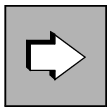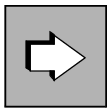For coordinated interoperation, you must generate the UTM database connection in the KDCDEF statement DATABASE. The XA connection on BS2000 systems must also be generated with the DATABASE statement. Here you specify:
the type of database system
The type “DB” must be specified for database systems from other manufacturers.
the entry name of the database
the library from which the database connection module can be loaded
You can specify a symbolic link name for the library. This causes a search to be made for the connection module in the IMON installation path for SESAM/SQL and UDS/SQL databases; the module is then loaded from the library. This has the advantage that the UTM application is independent of installation IDs and library names of the database system.
Database access data (user name, password).
These specifications are optional and are only permitted for Oracle databases. If you want to store the access data in the UTM generation then you must use placeholders in the open string for the user name and the password.
You can specify the DATABASE statement more than once and in any order. If you define several database systems of the same type, the entry names must be different. You can combine all the database systems that you can specify during UTM generation; one of the systems can also be an external system (DATABASE=DB).
More details can be found in the openUTM manual “Generating Applications” under the description of the DATABASE statement. |
Creating and assembling the ROOT source
During the KDCDEF run, a ROOT source is created which contains the following macro calls, depending on the specifications for DATABASE:
macro call KDCDB when working with one database system
macro calls KDCDBx when working with several database systems; here, x is the first letter of the database type specified in DATABASE, e.g. KDCDBS for SESAM
The KDCDB macro or KDCDBx macros are supplied with the respective database systems. When assembling the ROOT source, the libraries containing these macros must be assigned explicitly.
More details on creating the root source can be found in the openUTM manual “Generating Applications” in the chapter “Generating application components”. The creation of load modules is described in the section "Generating load modules". |


